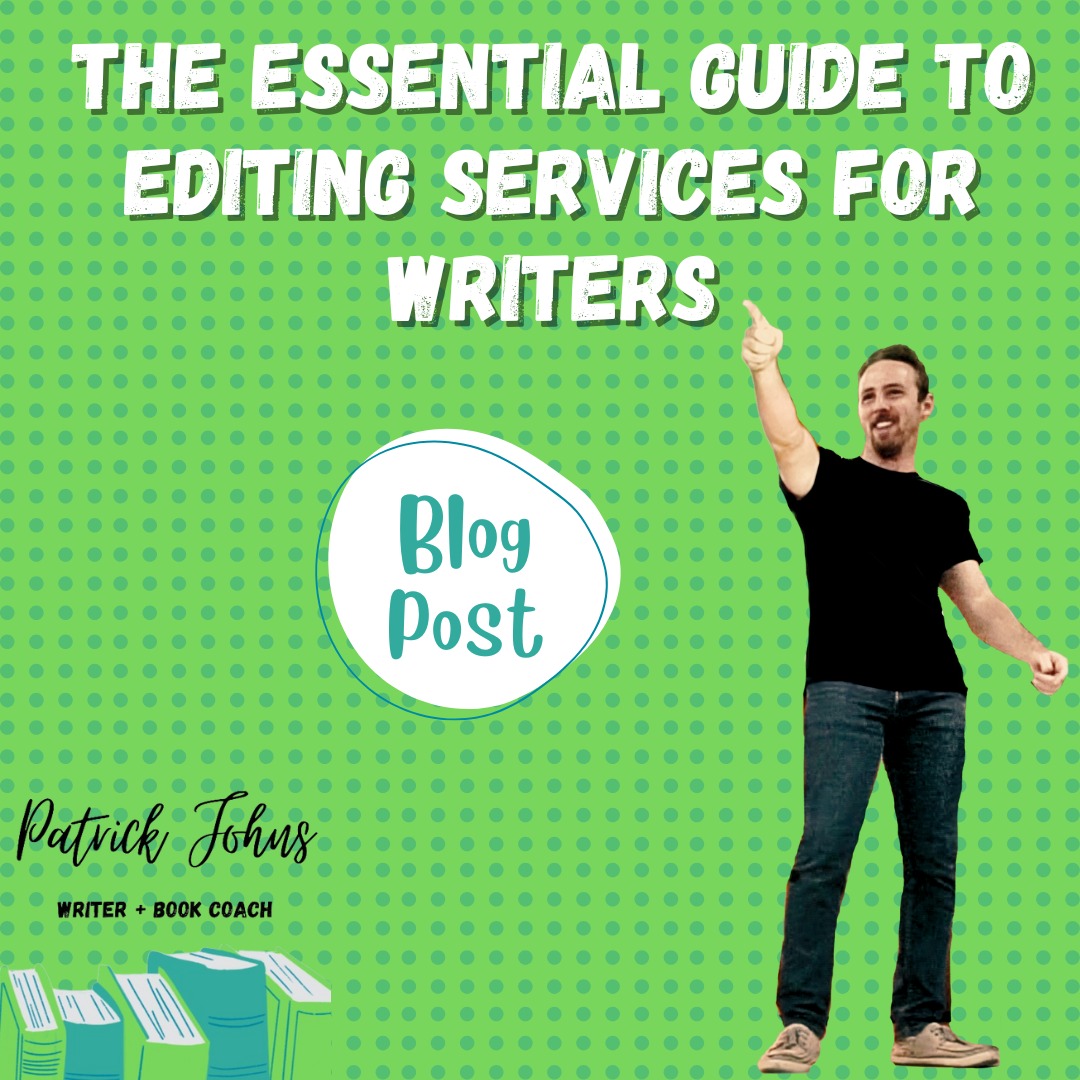I’ve heard way too many people say the infamous phrase “I want to write a book.” But there’s only a select few who actually get to celebrate when that finished product arrives at their front door. I never wept so hard when I received the first hard copy of my first book Junkland, the first book in The Hoarding series. Now, after publishing the second book in The Hoarding series and currently writing the third, and also publishing my first poetry book Stages of a Scattered Mess, I thought it appropriate to share my methods of writing and finishing a book.
Here are author Pat’s steps to writing a book:
1. Outline
There are two types of writers: discovery writers and outliners. A discovery writer, like George R.R. Martin and Stephen King, lets the characters guide them through the story to discover the plot. Outliners, on the other hand, write and map out everything from plot to character arcs to setting before diving into their first draft. Typically an outliner will start and finish with a first draft, but a discovery writer’s first draft will usually be a very detailed outline. A discovery writer will need to do a little extra work at the end with extra revisions and editing, while an outliner will have to do extra work in the beginning by mapping out their story from start to finish. Every writer is different, and there’s no right or wrong choice on how to begin your story. You can even be a hybrid of the two. Trust your instincts. There is one thing these two types of writers have in common, they will need to start with an idea.
2. Write and Don’t Look Back
I’m more of a hybrid writer when it comes to building a story. I like to have a rough outline with a beginning, usually a fuzzy middle, and a concrete end. I know it’s time to start writing my first draft when my outline can no longer tell me anything new about my story. It almost feels like a blind point, keeping me from seeing anything else. This is the point when I know it’s time to start writing. To dive in and just keep swimming until I see the end. Because I know by starting my first draft, I will discover even more of my story and break out of that blind point.
This is when participating in NaNoWriMo (National Novel Writing Month) is a good idea. NaNoWriMo brings writers together online and challenges them to write 50,000 words in the month of November. Depending on your skill of a writer, this could be anywhere from one to four hours of writing every single day for thirty days. It’s difficult, but necessary because, besides teaching writers the importance of setting up a writing routine, NaNoWriMo teaches writers the ultimate rule of writing your first draft: just keep writing.
This is the step that makes or break a writer. I’ve known aspiring writers who wrote better than myself, but there was a big difference between myself and them: I finished a book and they could never get past the first chapter. These types of aspiring writers never make it to the end because they go back and edit which leads to frustration because what they are editing is garbage.
Your first draft is meant to be garbage! But the great thing about a first draft is, no one will ever see it.
The most important rule of a writer, especially when writing the first draft, is to write from start to finish. You MUST push through to that end no matter what. Even if there’s a giant plot hole in your story. Even if the last chapter you wrote made absolutely no sense. Even if you have no idea what’s going to happen next. Just keep moving forward. You will encounter problems like these while writing. I have and they are the scariest unknowns you’ll ever experience in your life. But you need to trust in yourself and in your story. As you push toward the end, you will be able to see your story clearer.
Once you’ve seen your end, you now have established a skeleton frame for your story. This will make going back and revising so much easier because your story has structure.
And that’s another important rule of a writer: you can always go back and edit, but you can’t edit blank pages. So keep pushing forward to that end no matter how difficult it is. This has been the most crucial step separating writers from those aspiring writers. And you’re a writer!
3. Edit and Revise Your First Draft
Now you will need to read through the garbage you have written. But as you go back to the beginning you once feared, you’ll now see it with a new light. You’ll be wiser than you were before and will have a better understanding of your story. As you read through your first draft, ideas will begin to build and connect. Plot holes will begin to fill themselves in. Write your new ideas down by adding them as comments in their corresponding parts of the story. If you’re reading chapter six and an idea suddenly pops into your head for chapter one, add a comment for chapter one and keep reading.
After you’ve finished reading through your first draft, you will now have new comments, ideas, and changes for your story. Now it’s time to go revise and fix your story. Fill in those plots holes. Expand your character arcs. Build upon your plot. Make your setting come to life. As you revise, make the story as tight and finished as it possibly can be. Don’t be worried if you need to go through your story from start to finish multiple times. This step can be a second draft or a fifth draft or more.
4. Beta Readers
No book can be written by itself. You need fresh eyes helping you along the way because the longer you spend in your story, the more bias you become. You’ll hit a point in your writing when you need a fresh pair of eyes to criticize you. And this phase also makes or breaks a writer: accepting criticism.
Accepting criticism is key to becoming a writer. Accept criticism with open arms. Criticism is your friend. But there is a difference between constructive criticism and criticism that can harm your story. Feedback like “I don’t like this” is not constructive criticism. Constructive criticism looks like “I don’t like this because…” and “You should do this instead…”
Beta readers can be friends, family, or fans from a previous book. But it’s your job to communicate to your beta readers about constructive criticism and to give you their thoughts and opinions and ideas. Some of my best ideas of my stories have come from my beta readers’ brilliant minds. When you go through their criticism, remember you are the author and you have the final say in your story. If you notice every beta reader is saying something similar about a certain part, it’s probably a good idea to listen to them. However, if one beta reader says they don’t like something, but another beta reader says they love it, you as the author have the final say in the matter. Listen to your author-self.
5. The Final Draft
Once you’ve gone through all your beta reader’s comments and have collected your new thoughts, comments, and ideas, it’s now time to write that final draft. This is the time you go through your story chapter by chapter, making it as crisp and tight and flawless as possible. Connect those plot holes. Develop those character arcs. Clean up the writing.
But how will you know when you’re done?
Maybe other writers have different opinions on this, but for me, there’s no end to a story. You can always change things. I’m sure J.K. Rowling looks back on her first Harry Potter book and wishes she could make changes. Heck, Stephen King rereleases longer, updated versions of books he wrote years and years before. So how do you know when to call it quits?
When you can no longer look at your story. Once you’ve hit this point, go through your final edit, fixing any last minute comments and making those last changes. You can even give out your book to a second round of beta readers. It’s good to take a step away from your writing for an extensive period of time. Because when you return to it months later, you return with a fresh mind and with fresh eyes. But once you’ve hit this point, it’s a good time to start trusting yourself and wrapping up your story, realizing that it’s the best it can possibly be and to move on with your life. Save your new ideas and tricks you’ve learned for your next book. It’s time for this book to see the light of day.
6. Celebrate
Woo! You’ve finished a book! Pop that champagne, have a party, smile and shout out to the world that you’ve written a book. I’ve done many difficult things in my life, like running a marathon and leaving my full-time engineering job to move to Spain to teach English and pursue writing, but writing a book is by far the most difficult thing I’ve ever done. And it doesn’t get easier. Each book is different with its own problems that you will need to tackle and solve. So be proud that you’ve finished and remember how good it feels to have completed a book.
It’s important to remember this feeling, because it will fade. It’s about the journey more than the finish. You will need to love everything about the struggle that comes with writing a book. Because it is difficult. But it is an experience that will make you a better person and change your life.
Every writer is different and every book is different. Learn from your favorite authors, but at the end of the day, trust your writing instincts and do what works for you. There is no write or wrong answer in writing a book. Stephen King pumps out books while George R.R. Martin takes is darn sweet time. Enjoy the ride. And happy writing!
-Author Pat







